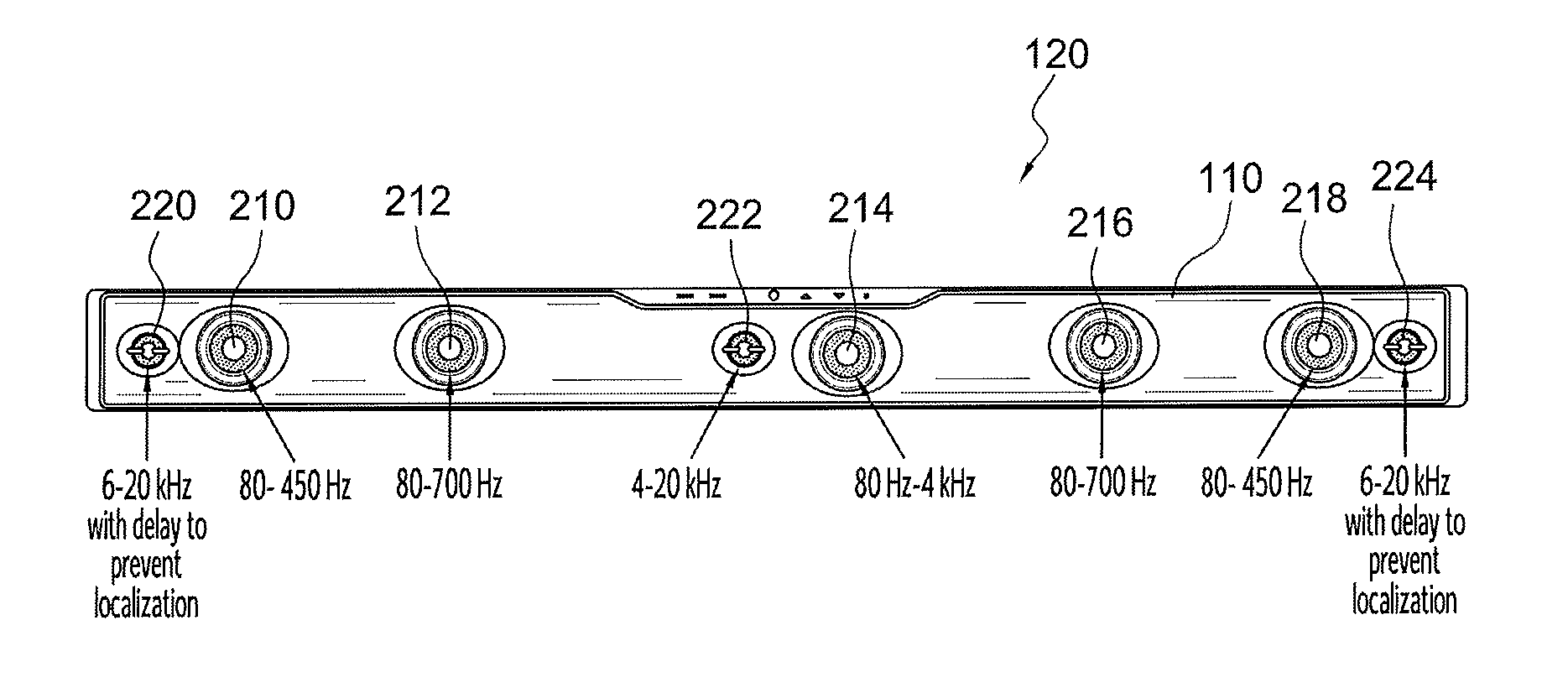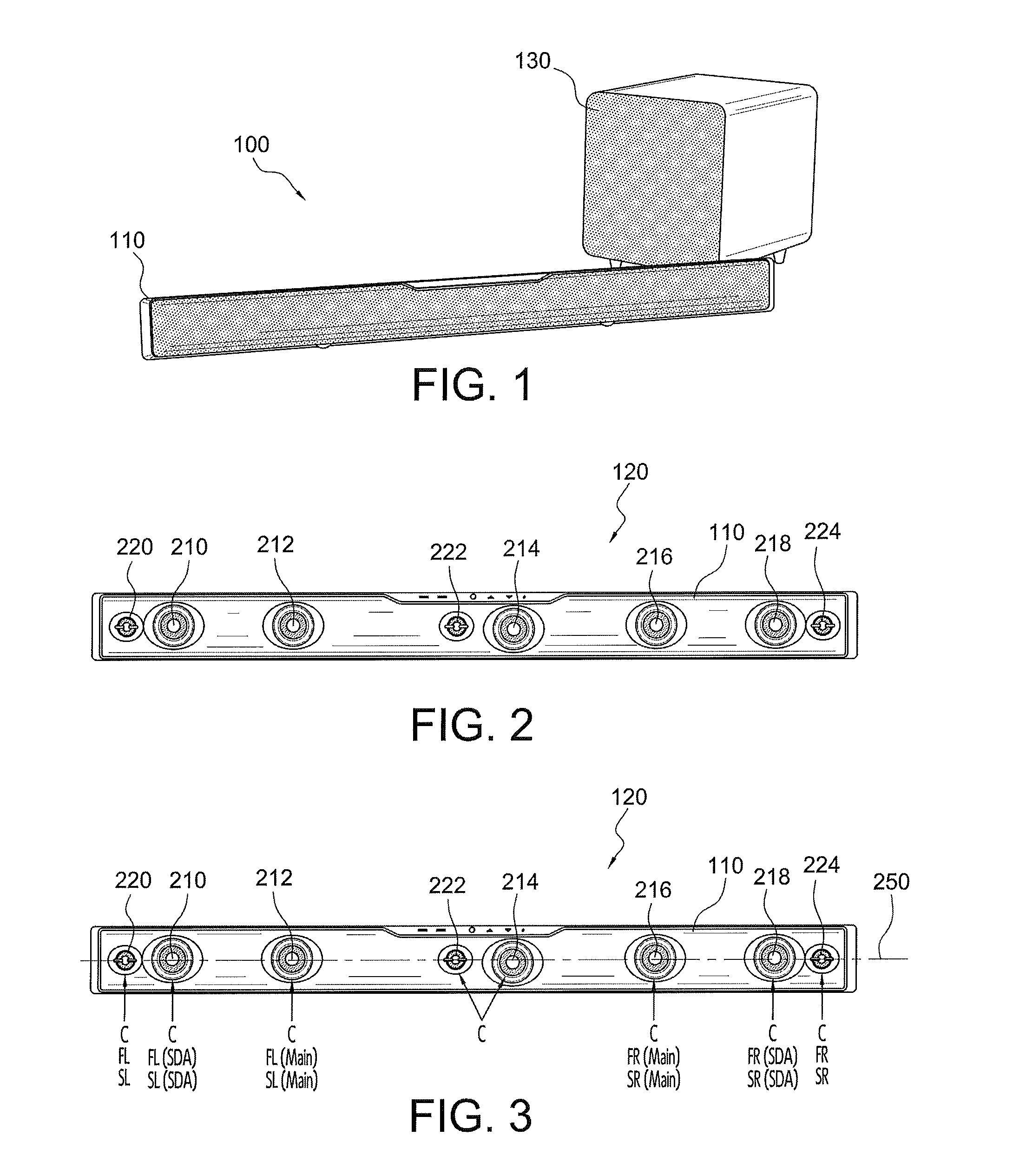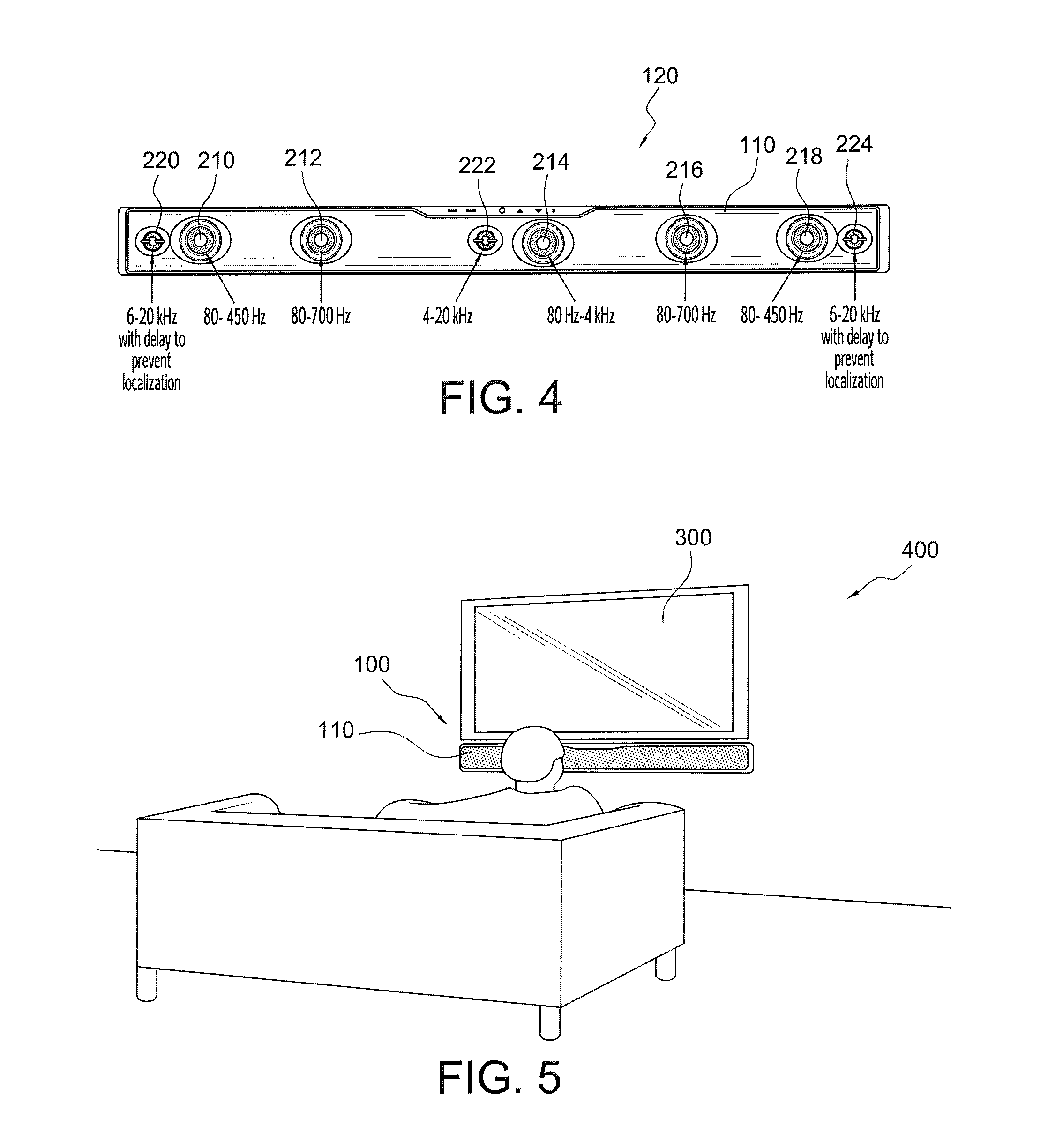Method and System for Optimizing Center Channel Performance in a Single Enclosure Multi-Element Loudspeaker Line Array
a multi-element, loudspeaker technology, applied in the direction of stereophonic arrangments, stereophonic circuit arrangements, electrical devices, etc., can solve the problems of poor center channel dialog intelligibility and localization, many users' problems, speaker placement, component connection and related complications, etc., to achieve the effect of improving center channel fidelity and intelligibility
- Summary
- Abstract
- Description
- Claims
- Application Information
AI Technical Summary
Benefits of technology
Problems solved by technology
Method used
Image
Examples
Embodiment Construction
[0035]Turning now to FIGS. 1-13, a multi-channel single enclosure loudspeaker system 100 is configured for use with a method for optimizing Center Channel performance from a single enclosure multi-element loudspeaker line array 120, in accordance with the present invention.in accordance with the present invention.
[0036]Referring first to FIGS. 1 and 5, in a traditional home theater listening space 400 the single soundbar enclosure 110 is configured to be placed near a video display 300, generally in front of the video display 300 and enclosure 110 is positioned such that line array 120 is aligned in a substantially horizontal orientation which is preferably proximate to and substantially parallel with the bottom or top edge of the display's surface.
[0037]FIGS. 2-4 illustrate an exemplary embodiment showing the alignment of the eight loudspeaker drivers or elements, along central axis and in system 100, and the signal for each loudspeaker driver is appropriately band limited to provi...
PUM
 Login to View More
Login to View More Abstract
Description
Claims
Application Information
 Login to View More
Login to View More - R&D
- Intellectual Property
- Life Sciences
- Materials
- Tech Scout
- Unparalleled Data Quality
- Higher Quality Content
- 60% Fewer Hallucinations
Browse by: Latest US Patents, China's latest patents, Technical Efficacy Thesaurus, Application Domain, Technology Topic, Popular Technical Reports.
© 2025 PatSnap. All rights reserved.Legal|Privacy policy|Modern Slavery Act Transparency Statement|Sitemap|About US| Contact US: help@patsnap.com



